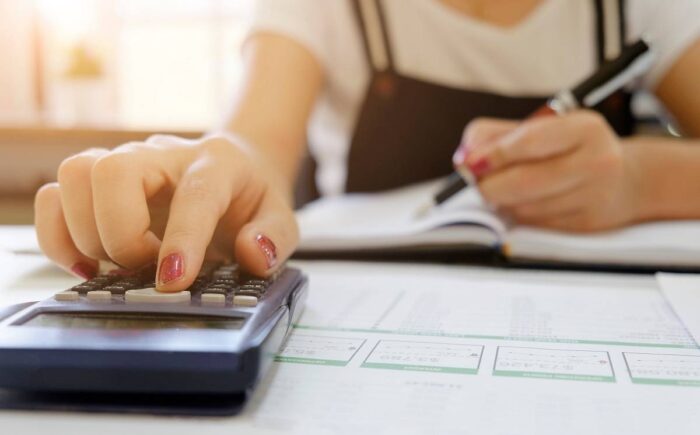Student loans are a common option for low-income households and financially struggling individuals to afford a college education. According to the most recent statistics from Education Data, there were 44.7 million Americans with student loan debt in 2022, totaling $1.757 trillion. Student loan defaults, however, account for approximately 11.5% of borrowers, or 5.14 million American students.
In most cases, having a defaulted student loan can affect your tax returns. This article will explore how student loans impact your tax refunds in 2024 and the different types of federal student loans that can affect your tax refunds. Continue reading the article below to learn more.
Overview of Student Loans And Tax Refunds
Understanding how student loans and tax refunds work is critical, as these things significantly affect your life plans and future goals.
Money taken out from a private creditor or the government to cover college expenses is generally known as a student loan. Unlike Pell Grants or college scholarships, most student loans have to be paid back with interest over a set period of time. Student loans may be used to pay for educational expenses, including:
- Tuition fees
- Miscellaneous
- Books and other school supplies
- Transportation
- Living expenses
- Laptops or tablets
- Other necessary learning equipment
On the other hand, tax refunds are cash reimbursements given to taxpayers from the state or federal government after they have paid more in taxes than they owe. Generally, you may be eligible for a tax refund if you overpaid your taxes from the previous tax year. However, in some instances, if you are in debt from a federal student loan that is in default, the government may seize your tax refunds to compensate a percentage of the defaulted balance.
Will Student Loans Take My Tax Refund 2024
A court order mandating the enforcement of a legal procedure in favor of a creditor is known as a garnishment. A tax garnishment grants the federal and state tax authorities the right to deduct from or seize your tax refund to pay off any outstanding debts to the government. The Treasury Offset Program analyzes and reconciles any federal payments owed to you with any unpaid taxes or benefits you owe the government.
In order for your tax refund in 2024 to be seized, your federal student loans must have defaulted. However, keep in mind that only defaulted federal loans can take your tax refund; loans from private creditors are not allowed to hold your tax refunds for garnishment.
Explanation Of How Student Loans Can Affect Tax Refunds
You will receive a notice from your loan holder stating that your account has been referred to the Treasury Offset Program (TOP) if your tax refund is subject to garnishment. This section of the U.S. Department of Treasury collects federal contributions to pay off overdue debts and loans owed to state agencies.
Before your tax returns are held, your loan holder will also give you a tax offset notice. This is typically sent to you months before filing your tax return, giving you enough time to settle your past-due payments. It is important to note that you may only receive such notice once.
Additionally, keep in mind that tax garnishment cannot be contested on the basis that you did not receive the offset notice. You will only be contacted by the Treasury Department following the offset.
To avoid unexpected tax garnishment, ensure your loan provider has your most recent contact information. If you are unsure who is your loan holder, you may check your account at studentaid.gov.
Types Of Federal Student Loans That Can Impact Tax Refunds
Lenders can only garnish your tax refunds if your federal student loans are in default. So when you are deferring, forbearing, or repaying your student loan, you are safe from having your tax refunds garnished.
Tax refund offsets are available for the following types of federal student loans:
Direct Loans. This type of loan is a federal student loan provided through the U.S. Department of Education. Generally, you have a federal Direct Loan if you obtained a federal student loan or consolidated your loans on or after July 1, 2010.
Direct Consolidation Loans. Consolidation loans allow borrowers to combine or consolidate two or more federal student loans to lower the interest rate and monthly payments.
Federal Family Education Loan Program (FFELP) Loans. In collaboration with private lenders, the FFELP, now known as William D. Ford Federal Direct Loan Program, provides student educational loans guaranteed by the federal government.
Federal Perkins Loans. This is a need-based low-interest federal student loan offered to low-income and financially struggling undergraduate and graduate students.
Direct PLUS loans. A Direct PLUS loan is an unsubsidized federal student loan offered by the Department of Education to graduate or professional degree students.
If you want to apply for a student loan and don't know how, visit our guide on how to apply for a student loan to learn more.
Conclusion
You may have your 2024 tax refunds seized if you default on your student loans. Tax garnishment only applies to federal student loans. In addition, private educational loans are ineligible to offset your tax returns unless you are sued in court, and a court order is obtained.
Are you a new student and want to know if your student loan qualify for forgiveness? Visit one of our articles today to learn more.
If you require financial assistance to pay for your college expenses, check out this article from Gov Relations on various college grants you can apply for.






